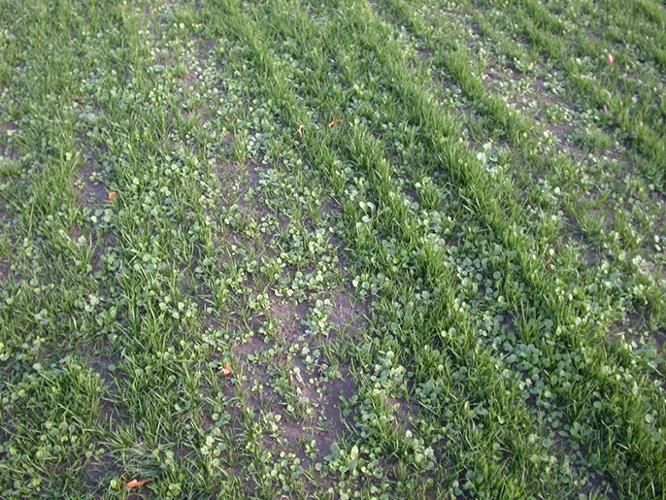Picture of the Week
November 23, 2020
Priorities??? Treat broadleaf weeds or overseed?
Glenn Hardebeck, Turfgrass Research Agronomist, Purdue University
Turfgrass establishment often requires more attention than preparing the soil, seeding and watering. Problems such as washouts, spotty germination or weed infestation may require a helping hand yet this fall. While we often field questions about broadleaf problems in newly seeded turf, weeds are not as high of concern as establishing a reasonable stand of seedling turf. Broadleaf weeds can be removed later after the seedlings have been mowed 2-3 times. After germination, it is more important to determine whether there is a need to spot seed or overseed in order to improve the turf density or uniformity.
This Tall Fescue was seeded the last week of September, which is at least two weeks past the primary seeding window for cool season turfgrasses in central Indiana. While the turf will be mature enough to survive this winter, the later seeding date has limited the ability of reseeding the area yet this fall. Seed planted late October through November is likely to winterkill but, it is possible to dormant seed the area anytime from December through early March. The freeze-thaw cycles will plant the seed for you and germination should begin by late April. Avoid preemergent crabgrass controls on areas that have been dormant seeded and delay broadleaf applications until late May or early June if needed.
Click images to enlarge

